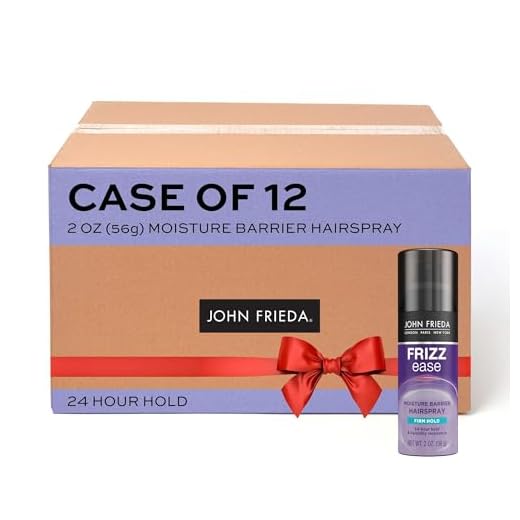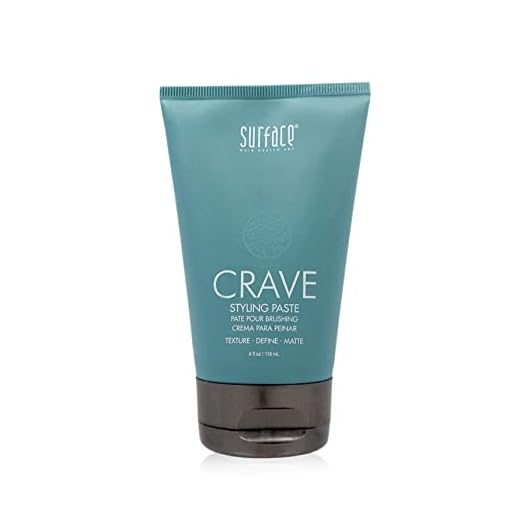



Carry-on specifics: Security checkpoints apply the 3‑1‑1 rule: individual containers no bigger than 100 ml (3.4 oz), all liquid and aerosol containers must fit into one clear resealable bag with a maximum volume of about 1 litre (quart), and only one such bag per passenger is accepted. Pump sprays and non‑pressurised styling liquids are treated the same for screening purposes. Present the bag separately at the checkpoint.
Checked baggage guidance: Many airlines permit pressurised styling cans in checked baggage within carrier and dangerous‑goods limits; caps and nozzle protectors reduce the chance of accidental discharge. Flammable propellants or products marked as hazardous may be banned from both cabin and hold – verify the airline’s policy and the relevant civil aviation authority before packing.
Practical recommendations: Transfer product into certified travel containers of 100 ml or less, switch to pump bottles or solid styling wax/pomade for longer trips, or purchase a sealed duty‑free aerosol after security. Keep receipts for duty‑free purchases and confirm that connecting airports accept sealed purchases over the 100 ml cabin limit.
At the checkpoint: Remove the resealable bag for screening, keep original caps on pressurised cans, stow aerosols upright and cushioned inside checked baggage when permitted, and consult airline customer service if in doubt to avoid seizure or delays.
Which airlines and security agencies permit aerosol styling products in cabin baggage and applicable size limits
Pack aerosol styling products in cabin baggage only when each container is 100 ml (3.4 oz) or smaller and all containers fit inside a single transparent quart-sized resealable bag; confirm carrier and departure-country screening policies before travel.
- United States – TSA: liquids/aerosols in carry-on limited to 3.4 oz (100 ml) per container, all placed in one clear quart-sized bag. Flammable aerosols may face additional restrictions under IATA/DOT rules.
- European Union / EASA & national CAA: 100 ml limit per container for cabin carriage; national authorities and some airports may enforce stricter checks. Most EU-based carriers follow this rule.
- United Kingdom – CAA/DfT: 100 ml per container for cabin; quart-sized clear bag required for all liquids and aerosols.
- Canada – CATSA: 100 ml (3.4 oz) limit in carry-on; larger pressurised cans typically prohibited unless checked and meeting airline checked-baggage rules.
- Australia / New Zealand: 100 ml per container for cabin; security checkpoints require transparent resealable bag.
- Japan, South Korea, many other states: follow ICAO/IATA guidance: 100 ml cabin limit; national variations possible – check local screening authority.
Major carrier practice (representative examples):
- US carriers (American, Delta, United, Southwest, JetBlue): follow TSA 3.4 oz/100 ml rule for cabin items.
- European carriers (British Airways, Lufthansa, Air France, KLM, Ryanair, EasyJet): apply EU/UK 100 ml cabin limit.
- Middle Eastern carriers (Emirates, Qatar Airways, Etihad): typically accept aerosol cosmetics in cabin up to 100 ml but may prohibit flammable-propellant cans or require declaration.
- Asia-Pacific carriers (Qantas, Singapore Airlines, ANA): cabin limits usually 100 ml; checked-baggage allowances subject to airline-specific dangerous-goods rules.
- If a container exceeds 100 ml, transfer to checked baggage or buy travel-size replacements sold after security.
- Label and retain original packaging; remove from cabin bag at screening when requested.
- Do not assume consistency across airports – check the specific airline baggage/Prohibited Items page and the departure airport security website 24–48 hours before flight.
- For legal or administrative queries unrelated to travel restrictions consult how can a father get full custody in florida.
How to pack aerosol styling spray for carry-on: 100 ml rule, resealable clear bag and practical sealing tips
Use only containers that state 100 ml or 3.4 fl oz maximum; any item above that size should go in checked baggage or be discarded at the checkpoint.
Place all liquids, gels and aerosols together inside a single transparent resealable bag: for US departures use a quart-size (≈946 ml) bag complying with TSA 3-1-1; for EU departures use a 1-litre resealable bag (common dimensions ~20×20 cm). One bag per passenger is standard at most checkpoints.
Keep original packaging with volume markings when possible; when decanting, transfer into rigid travel bottles clearly labelled 100 ml. Leave a small air gap (5–10% of bottle volume) to accommodate pressure changes during ascent.
Prevent accidental discharge by replacing or checking safety caps. Wrap the nozzle with a single layer of cling film, secure with a rubber band, then apply a strip of clear tape across the cap and bottle neck. For added security, place the sealed bottle inside a second resealable bag.
Pad the resealable bag with a folded paper towel or lightweight clothing to absorb leaks. Store the bag near the top of cabin baggage or in an external compartment for quick removal at security screening.
When carrying multiple aerosol or liquid items, keep the combined quantity within the single-bag size limit; overloaded or non-resealable containers are frequently rejected during inspection.
Check the departing airport and carrier regulations for specific aerosol or pressurized-item restrictions before travel; restrictions on flammability or total onboard quantity can differ from standard liquid rules.
Transfer to travel-size containers or choose solid/cream alternatives
Prefer travel-sized pump or non-pressurised atomizers for aerosol styling products; never attempt refilling factory-sealed pressurised cans due to pressure mismatch, contaminant risk and valve damage.
For liquid or pump formulations: decant using a small syringe or funnel into PET or aluminum bottles rated for sprays, size 50–100 ml. Leave 10–15% headspace to accommodate pressure changes at altitude and tighten caps with a silicone gasket. Test for leaks by inverting and spraying into a towel before packing; place each container inside a zip-top pouch for secondary containment.
For foams and mousses: use manual foaming dispensers designed for aerated liquids, which preserve texture better than simple sprays. Avoid narrow-nozzle bottles that clog; strain thicker formulations through a fine mesh before decanting.
Pressurised-can alternative: purchase purpose-built travel aerosols with refill-compatible valves, or buy compact non-pressurised styling concentrates that dilute with water at destination. If the original pressurised product is indispensable, store it in checked baggage under carrier limits rather than attempting to decant.
Solid formats: pomade tins, wax sticks, styling bars, balm-in-stick and shampoo bars serve as solid options that typically bypass liquid/gel screening limits. Pack solids in a small metal tin or screw-top jar, cushion with cloth, and label the item to speed inspection. Note that soft waxes and balms that soften at warm temperatures may be treated as gels during screening.
Creams and gels: treated as liquids/gels by security personnel and therefore subject to cabin liquid limits; transfer these only into leak-proof jars marked with content and net volume. For long trips, store bulk tubs in checked baggage or purchase single-dose sachets for in-flight use.
Quick checklist: use travel-rated PET/aluminum containers; leave 10–15% headspace; use silicone-gasket caps; test for leaks; double-bag decanted items; expect secondary inspection for solid-to-gel borderline products and keep original packaging or ingredient label for proof of composition.
Trip gear recommendations: best cheap umbrella stroller for rai and best reverse inverted umbrella
What to expect at security if an aerosol styling product exceeds limits and how to prevent confiscation or delays
If an aerosol styling product exceeds carry-on liquid limits, security staff will typically remove it during screening and most often dispose of it; prepare a contingency before arrival at the checkpoint.
Immediate actions at the checkpoint
Present the container when asked and remain calm; screening officers will either: (1) request transfer of the item into checked baggage at the airline counter, (2) escort the item to secure disposal, or (3) send the passenger to a secondary inspection for verification. Confiscation usually results in no refund or return.
If time permits, request assistance at the airline desk to check the can into the hold. If the transfer cannot be completed before boarding, surrender is the common outcome. If disagreements arise, request a supervisor review on site; documented purchase receipts may improve chances for accommodation but are not guaranteed to reverse confiscation.
Practical prevention to avoid delays or loss
1) Pack aerosol-style products in checked baggage whenever feasible; secure the nozzle with tape, place the container in a sealed plastic bag, and cushion it with clothing to reduce leak risk.
2) Buy travel-size spray products (under 100 ml) or non-aerosol alternatives before passing security. Items purchased in airport duty-free and issued in a tamper-evident sealed bag with receipt are usually permitted through security even if over 100 ml – keep the seal and receipt intact, and verify transit rules for connecting flights beforehand.
3) Check carrier and departure/arrival country rules before travel: airline policies and national aviation regulators implement different dangerous-goods limits for aerosols in checked baggage; confirm limits and any per-person quantity caps with the airline or official aviation authority.
4) Allow extra time at the airport (add roughly 15–30 minutes) to handle possible secondary screening or to re-check items at the counter; pack alternatives in carry-on to avoid missing essentials if a product is surrendered.








